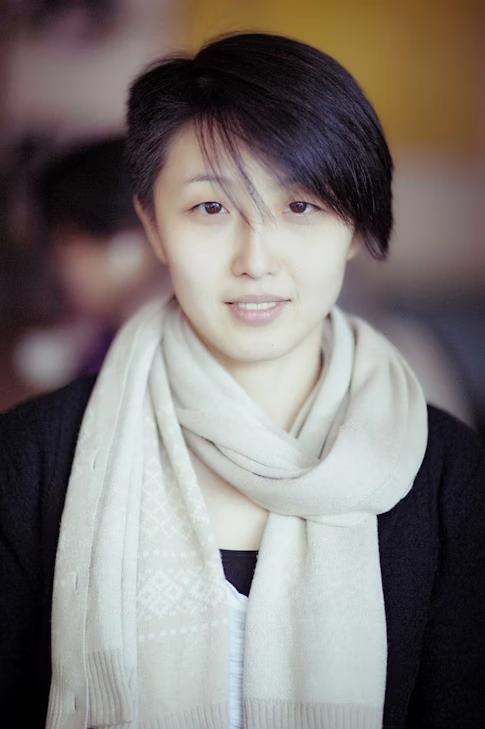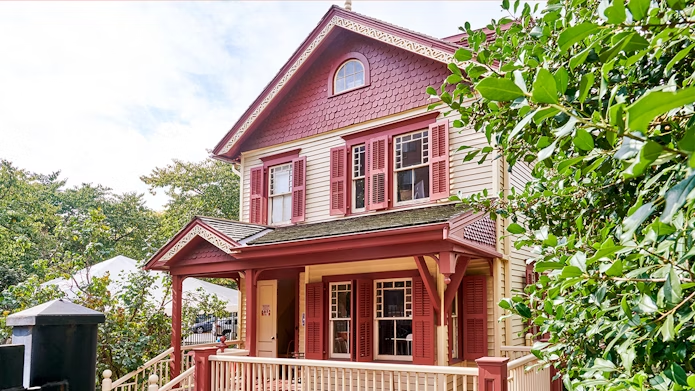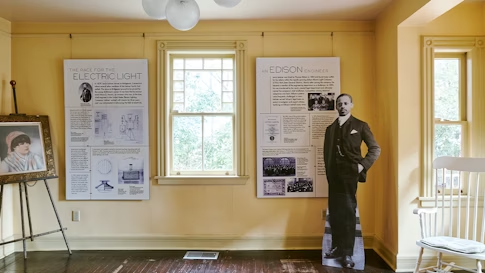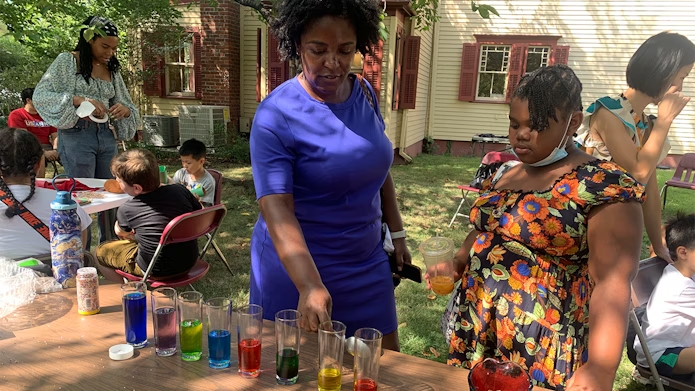
Interview: Ran Yan from the Lewis Latimer House Museum
Our new Science Sandbox Spotlight series aims to highlight the people behind the organizations in our grantee portfolio. In the series’ first installment, we speak with Ran Yan, executive director of the Lewis Latimer House Museum.

Located in Flushing, Queens, is a Queen Anne-style, wood-frame house-museum dedicated to preserving the history of Lewis Howard Latimer, African American inventor, electrical pioneer and artist. Constructed in the 19th century, the building once served as Latimer’s family home before being transformed into a museum in 1989. Today, museum visitors can experience one of the museum’s permanent or rotating exhibitions or take advantage of the STEAM-focused public programs that connect the arts and sciences. Weekly events invite students and parents to come and learn about an individual who, despite his many achievements, has largely been left out of history books.
Though from humble beginnings, Latimer “moved on to work for some of the biggest inventors of the time, including Thomas Edison, Alexander Bell and Hiram Maxim,” says Ran Yan, executive director of the Lewis Latimer House Museum. “Our mission is to tell his story; to engage everyone to learn about this important history, especially because people like Lewis Latimer — and their contributions to science and technology throughout American history — have often been overlooked.”
Yan has been with the Lewis Latimer House Museum for nearly eight years. In her role, she continues spreading the story of Lewis Latimer to the community at large. Science Sandbox spoke with her recently to learn more about what led her to the work of Lewis Latimer, and what she’s done during her time as executive director of the museum.
Below is a transcript of our conversation. The transcript has been edited for clarity.
Thanks, Ran, for being the first person featured in our Science Sandbox Spotlight series! Can you start by telling us about the Lewis Latimer House?
Thank you for inviting me! The Lewis Latimer House Museum is the historic home of Black inventor Lewis Latimer. He lived in the house from 1903 to 1928 and it was likely the only house the Latimer’s owned. Lewis Latimer was a self-taught inventor, humanist and patent expert. His parents, freedom seekers originally from Virginia who self-emancipated, settled in Boston, where they raised their family. Despite the lack of any formal education, the young Latimer taught himself drafting while working as an office boy in a patent law firm. Eventually, he became the head draftsman in the firm. He later moved to New York City when he joined Thomas Edison’s team.

And what makes the Lewis Latimer House unique?
We stand out first because of the authentic history embodied in the physical structure of the landmarked house. It’s a historic home that provides people with an intimate, visceral feeling of being in the space where Latimer lived. The museum is a really important tool to teach history as it relates to technology, science and the arts — because Latimer was also very passionate about the arts. I think his story is unique in that it’s very multi-dimensional; he was an early advocate for the integral connection between science and the arts. He even spoke to this during a speech at the Bridgeport Scientific Society. We are also a very community-centered space. We are rooted in the Flushing-Queens community and the incredibly diverse New York City populations. So, we pride ourselves on staying engaged and rooted in our local constituents.
I love what you said about how much history there can be felt within a physical space. How did you end up becoming involved with the museum?
I came to this country as an immigrant after college graduation. I enrolled in a master’s program in historic preservation, where I became interested in nonprofits, especially museums and cultural institutions. After completing my master’s degree, I was one of 20 or so people awarded a fellowship to work on a pilot project at the Lewis Latimer House. At that point, the Lewis Latimer House wasn’t operating regularly. Due to historical underinvestment, it didn’t have a budget or professional staff. As fellows, our mission was to reinvigorate the space, and reimagine how to engage our local communities in the historic house. At the conclusion of my fellowship, I stayed on at the museum as an employee and started building a team. I felt really connected to Latimer’s story. Even though I’m not African American, I am an immigrant, and can relate to several parts of his life.

Can you talk more about that?
I grew up in China, and I’ve always been interested in science and arts, such as math, drawing, music, etc. But I never knew that there would be an opportunity to combine these passions into a career. I think Latimer was really inspiring in that he saw that STEAM (Science Technology Engineering Art and Mathematics) subjects could be integrated.
You also touched on the community engagement aspect of the work. Who makes up the museum’s community? What audiences are you trying to reach?
We have a BIPOC-centered audience. About 40 percent of our educational program participants are African American or Black, about 17 percent are Asian and another 17 percent Latine. In the Queens neighborhood of Flushing, where the museum is located, close to half of the residents are either first- or second-generation Chinese immigrants.
What inspires you to do the work that you do?
I’m always learning from the visitors of the museum. They bring such a wealth of backgrounds and knowledge and connections. It’s really fulfilling. And our board members, including a descendant of Lewis Latimer, are incredibly devoted to the museum and its programming. We have a broad community of support, interest and commitment to tell this history, and to Latimer’s story, which has been a big inspiration to me.
Are there specific events or programs at the museum that are particularly exciting to you?
Sometimes it can be as simple as opening the museum to the communities we serve, giving them the support to develop what they want to see, and how they want to use the space. They design activities that meet their own needs, so it comes from a place of authenticity. Those are really special events.

Is there a moment, or are there moments, where you feel particularly proud of what you’ve helped build?
When I started working at the museum, I didn’t have a team. I was by myself. So, I’m proud of building a team, including a small but dedicated staff and a board that is diverse — in experiences and backgrounds — and maintains a high level of passion. It’s a team that is incredibly representative of who we serve and embodies the history we’re telling.
Do you have any advice for people who are interested in science engagement work? Any tips on how to succeed in the type of work that you’re doing?
I think it’s helpful, at least for me, to recognize one’s own interests and passions and find that point of connection between those passions and the community’s needs.
I find it incredibly fulfilling to challenge myself in things that I don’t instinctually think about, or that I haven’t yet discovered an interest. But here at the museum, I’m doing things that I haven’t done before — and I’m trying to find some success in that.


